(Continued from Part One.)
By May of 2007, Mr. Kiko Vecin was already in the thick of accumulating baticuling wood for this project, since a considerable quantity of those would be required to represent a full-sized group of thirteen figures. These logs were stored and allowed to dry indoors in his workshop in Makati as well as in other locations.
The critical design and artistic choices that needed to be made involved the layout and staging of the tableau. As the examples that we saw previously showed, staging will be very critical, especially of such a large group. Good staging will vivify an important scene for the devotee, the first of the new Stations of the Cross. Poor staging will result in either a chaotic mess of figures and colors or a static assemblage of humanoid forms.
Fortunately, the Vecin Workshop is particularly skilled and renowned for its dynamic staging of processional tableaux. A clear case in point is the Last Supper that they did for Trece Martires, Cavite in 2003, and that we already saw previously.
This obviously was to be our benchmark for this project, upscaled slightly to a full five feet from just over four-and-a-half, and fitted onto a hopefully less cramped-looking carroza.
By June 2007, Mr. Vecin and his gifted associates had layout and design proposals ready for review. We had already agreed previously that a standing Christ was preferred, for several reasons, not least of which was that it would more readily convey a sense of activity and dynamism than a seated one. Also, Peter and John would flank the Christ, following the traditional layout. These three figures would then constitute the highest-elevated of the levels of this three-tiered tableau.
On the middle level, a dynamic group of three apostles would each be positioned on the viewer’s left
and on the right.
The lowest tier would have a pair of apostles on the right
and on the left,
the latter including an attempting-to-flee Judas Iscariot.
Since we decided that this tableau would not have any waiters, dogs, or other cutesey but superfluous characters, all thirteen figures were thus fully accounted for in the layout.The overall layout would appear this way when viewed from the front of the carroza.
and this way when viewed from the right side.
The carroza itself would have to be 16 feet 3 inches long, 8 feet 4 inches wide, and with a lower floor about 5 feet from the ground. A very initial design, proposed to be all in wood, was also provided.
These designs were to be the basis of most of the subsequent activities, although there was no intention to keep to these rigidly (in fact, there were a number of small deviations in the final work). Nonetheless, these served as guidance as the figures were started to be carved in the succeeding months, fine-tuned, and then left to dry further.
By October 31st, 2007, here is how they looked like. The completely bald Christ was already holding a piece of bread.
The Peter was partially bald yet very characterful.
The John was expressively quiet, with a full mane of carved hair.
And the other nine apostles were essentially complete as well and sitting out to dry. To ensure that they looked sufficiently dissimilar, Mr. Vecin had allocated the head-carving responsibilities amongst at least four different sculptors of the Vecin Workshop.
If that seemed both numerous yet lacking somewhat, it’s because the all-important head of Judas Iscariot was still being worked on elsewhere.
Several more weeks of drying came next, but by December 15th, 2007, it was time for a friendly pre-Christmas visit to the guys—at least those who were around. The bald Christ head was there, nestled amongst some baticuling logs to dry.
If that seemed both numerous yet lacking somewhat, it’s because the all-important head of Judas Iscariot was still being worked on elsewhere.
Several more weeks of drying came next, but by December 15th, 2007, it was time for a friendly pre-Christmas visit to the guys—at least those who were around. The bald Christ head was there, nestled amongst some baticuling logs to dry.
But in addition, an alternate Christ head with fully-carved hair was also nearly complete, seen here mounted on the body.
A younger clean-shaven face was taking shape as an alternate head for one apostle.
John seemed rather impatient to get completed.
The others were more patiently waiting to be worked on further.
If they had known that just two weeks later, on December 29th, 2007, they would be scalped and their brains scooped out, would they have been as expectant?
Surrealism aside, this was actually an important step, to ensure that the heads were completely dried out and would thus be resistant to cracking for a very long time.
The stools that those of the apostles who would be seated would be using had also started to be made by now.
By January 10th, 2008, everyone had their scalps back in place and could therefore sit at ease, with all limbs present to allow for maximum expression.
By January 30th, or barely six weeks before Palm Sunday, air drying was adjudged to have been sufficient, and therefore painting could begin on the figures. The heads started to acquire their flesh tones
By January 30th, or barely six weeks before Palm Sunday, air drying was adjudged to have been sufficient, and therefore painting could begin on the figures. The heads started to acquire their flesh tones
and the bodies started to be painted in their traditional blue colors.
including our impatient friend John.
And more stools were on their way.
By February 9th, more bodies had moved through the painting process
as well as more heads.
Some stools too got their required varnishing
while others were already being used by some of the gang
including John.
To ensure that no one fell off their stools, each seated Apostle's butt had a wooden peg to anchor it firmly to the seat.
Also visible in the above photo is the inscription on each figure's lower back, " F A Vecin -- March 21, 2008," obviously postdated (not entirely accurately) to the upcoming Good Friday.
Judas Iscariot was earmarked for special treatment, with one of his two alternate heads in the primer stage
and the other already being fleshed-out.
By February 16th, or exactly a month before Palm Sunday 2008, everyone of the thirteen had been fully assembled and painted. They were hanging around the cramped Vecin Workshop, seated or standing in small groups.
By February 16th, or exactly a month before Palm Sunday 2008, everyone of the thirteen had been fully assembled and painted. They were hanging around the cramped Vecin Workshop, seated or standing in small groups.
Some preferred to sit by themselves, though.
Here is Saint John in the background.
And Saint Peter on the left.
Here is Christ on the right, with Judas Iscariot, wearing one of his two alternate heads, on the left.
This Judas head was modeled on the one from the old “Kiss of Judas” tableau in Vecin Collection, seen here next to it on the left.
Somewhat more sinister-looking though was the other alternate head, silently scheming to get mounted on the body.
The Christ, on the other hand, was gracious and dignified, even while not yet garbed.
And the carved hair on this head (the other Christ head was intended to have a wig) fell properly in place. (Of course.)
Saint John was looking handsome and spiffy, with a pseudo-French musketeer moustache and goatee, and long and wavy carved hair.
Saint Peter was characteristically wrinkled and anxious.
The other nine apostles, though all very wide-eyed to ensure that they didn't look sleepy once mounted up high on the carroza, were nonetheless an extremely interesting study in varied facial types and expressions.
Whether they could all somehow come together as a coherent group was the big question of the moment.
(Continued here.)Originally published on 28 February 2009. All text and photos (except as otherwise attributed) copyright ©2009 by Leo D Cloma. The moral right of Leo D Cloma to be identified as the author of this work has been asserted.
Original comments:
arcastro57 wrote on Mar 20, '09
I've never seen such crowded talyer when these 13 Last Supper figures were being worked on at the Vecin Workshop!
|
victorancheta wrote on Mar 20, '09, edited on Mar 20, '09
the second judas head is my fave. ;D
as a friend of mine put it, "i'd rather be left behind amongst the sinners when the rapture comes as they would know how to party!" |
adlailara wrote on Mar 20, '09
Thanks for sharing this most informative and comprehensive story of
the Malolos Last Supper paso. My enthusiasm as a santo devotee has been rekindled! |
antigualla wrote on Mar 20, '09
Leo, salamat sa mga talang binabahagi mo sa akin. Hayan, iniisip ko na tuloy na maglabas din ng Santa Cena dito sa aming Metropolitan Cathedral ng Cebu! Hehehe. Kaya lang, hindi ko kaya ang presyo ng Kiko Vecin. Dito na lang siguro ako maghahanap ng magaling na eskultor, o kaya, magpagawa ng mga ulo't kamay sa Bicol o Pampanga at katawan na lamang ang impaukit dito. Wala rin kasing baticuling dito sa Visayas. Naubos na raw. May isang bayan nga sa Southern Leyte na pinangalan pa dito (Hindang) dahil ito raw ang source ng baticuling wood in the olden days pero ngayon yata, kahit isang puno wala na. Sabi ito sa aking ng isang mga 70 something na eskultor dito. Anyway, congratulations for this Santa Cena or La Ultima Cena. I know Kiko Vecin is the top santo integrator in Manila, if not in Luzon now, and he doesn't come cheap! hehehe. But then again, quality always comes at a price. Ulit, congratulations at mabuhay ka! Mabuhay ang lahat ng mga santo adik na Pinoy!
|
rally65 wrote on Mar 20, '09
antigualla said
I know Kiko Vecin is the top santo integrator in Manila, if not in Luzon now, and he doesn't come cheap!
You might be surprised to learn that there were at least a couple of other outfits who quoted significantly higher prices for this project than the Vecin Workshop.
|
mikee91493 wrote on Mar 20, '09
i love the descriptions! hahaha nice one.
|
meisterguysmiley wrote on Mar 20, '09
I remember when I met you in your office in June 2007 and showed me the above illustrations for this tableau and it turned out exactly as planned!
I wonder if the alternate Judas and Jesus busts would be used for any future projects, I hope they would be, sayang at magaganda rin talaga sila! |
meisterguysmiley wrote on Mar 20, '09
... and basing on your narration, is it safe to conclude that St. John was your favorite? :D
|
rally65 wrote on Mar 20, '09
meisterguysmiley said
I wonder if the alternate Judas and Jesus busts would be used for any future projects, I hope they would be, sayang at magaganda rin talaga sila!
The plan was to use the alternate heads in alternate years. In the chaos of all the million and one things that need to be attended to each Holy Week, I wonder if we'll get around to doing this. Maybe we'll just switch heads every few years or so.
|
rally65 wrote on Mar 20, '09
meisterguysmiley said
... and basing on your narration, is it safe to conclude that St. John was your favorite? :D
Not actually, but it must be conceded that the John looks rather unusual and therefore is easily amongst the most remarkable of the figures. I know Mr. Vecin seemed to like it the most -- he would always chuckle whenever he looked at it.
My own favorite figure here would probably be the Judas Iscariot -- such a strong-looking character as I've ever seen in any sculptural group. |
meisterguysmiley wrote on Mar 20, '09
rally65 said
The plan was to use the alternate heads in alternate years. In the chaos of all the million and one things that need to be attended to each Holy Week, I wonder if we'll get around to doing this. Maybe we'll just switch heads every few years or so.
Nice! Will be on the look out for this tableau in the years to come. And also in your upcoming projects :D
|
rally65 wrote on Mar 20, '09
adlailara said
Thanks for sharing this most informative and comprehensive story ofthe Malolos Last Supper paso. My enthusiasm as a santo devotee has been rekindled!
Thanks, Adlai -- but we're just halfway (or less) through the narrative. A pity I can't write it any faster than this -- but I hope not to cross over into Easter.
|
rally65 wrote on Mar 20, '09
arcastro57 said
I've never seen such crowded talyer when these 13 Last Supper figures were being worked on at the Vecin Workshop!
It got even worse than this -- Mr. Vecin actually had to test-stage it inside the workshop before mounting it on the karo. That's coming up next.
|
18332 wrote on Mar 21, '09
cant wait to see the picts of the images in a carro or even in a procession. thank for a very nice story.
|

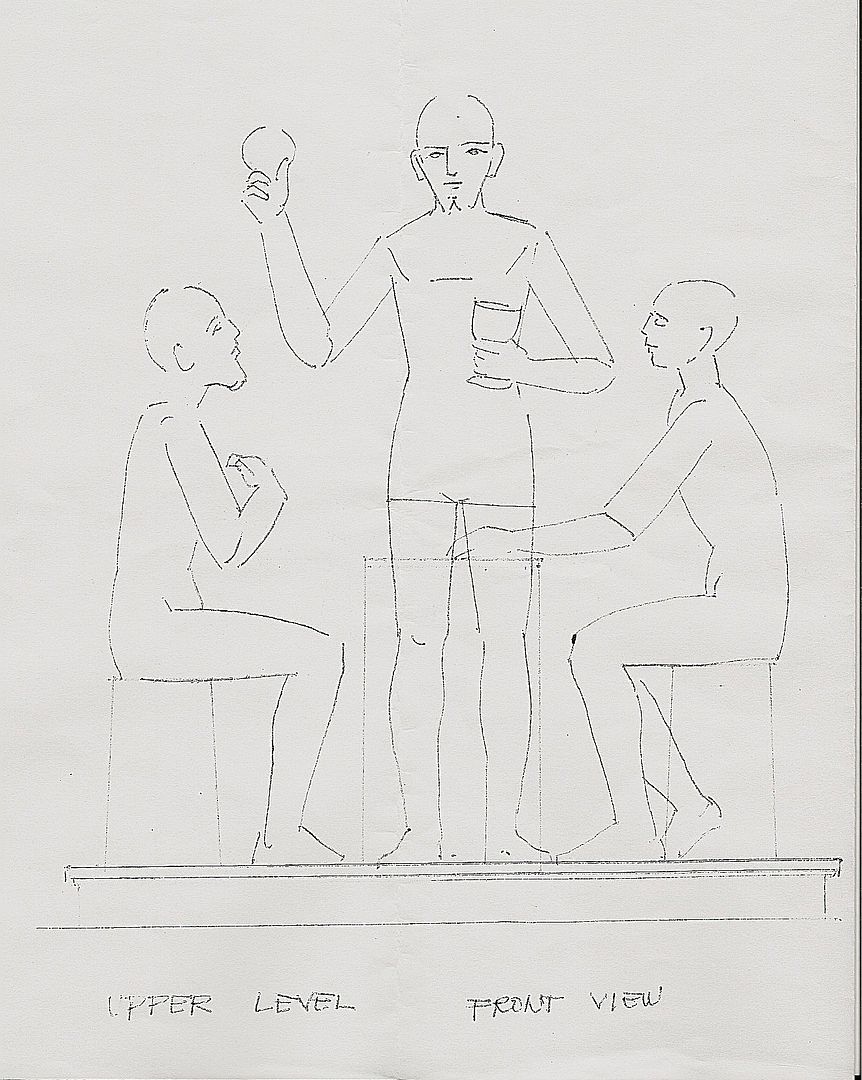
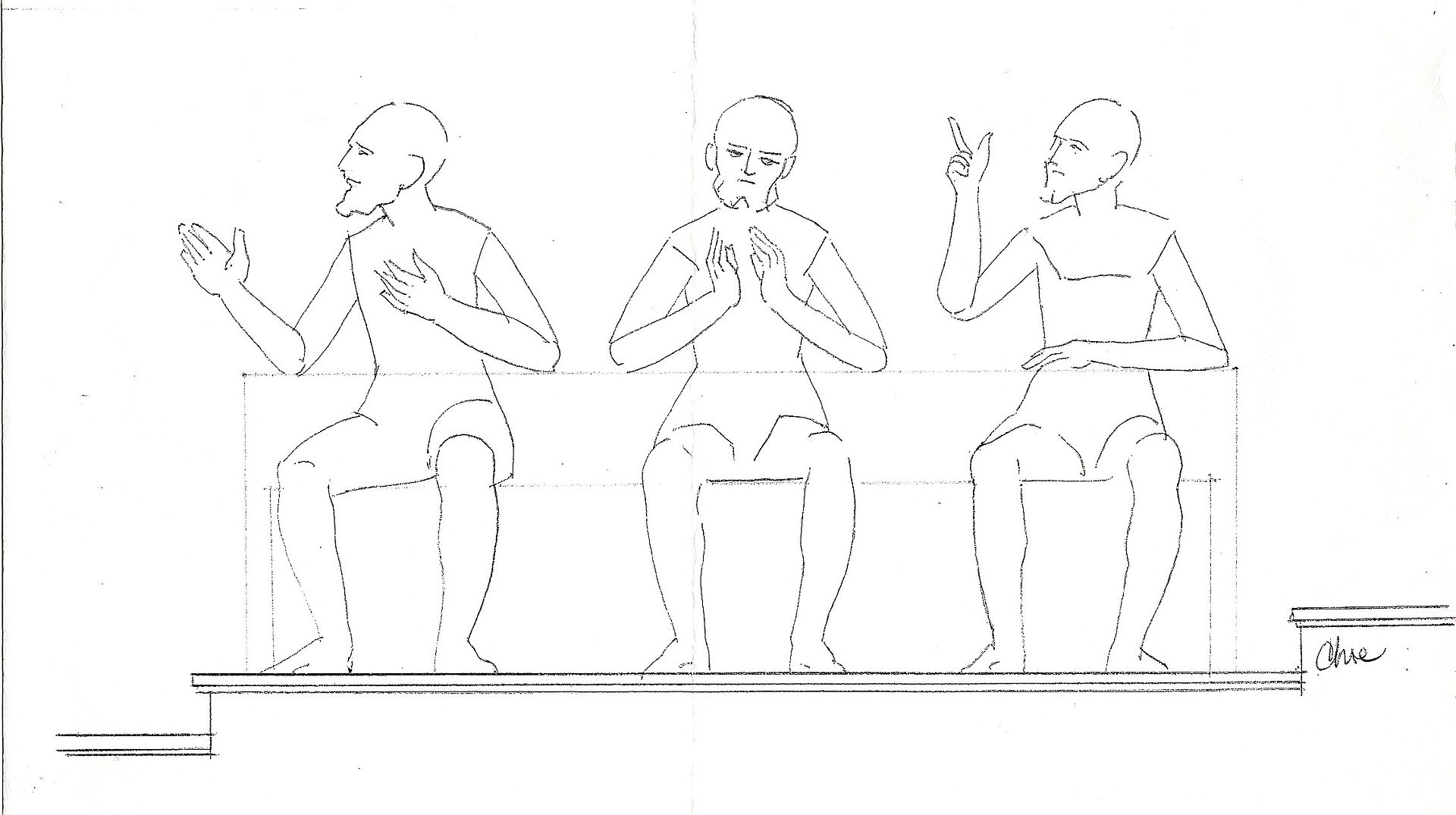
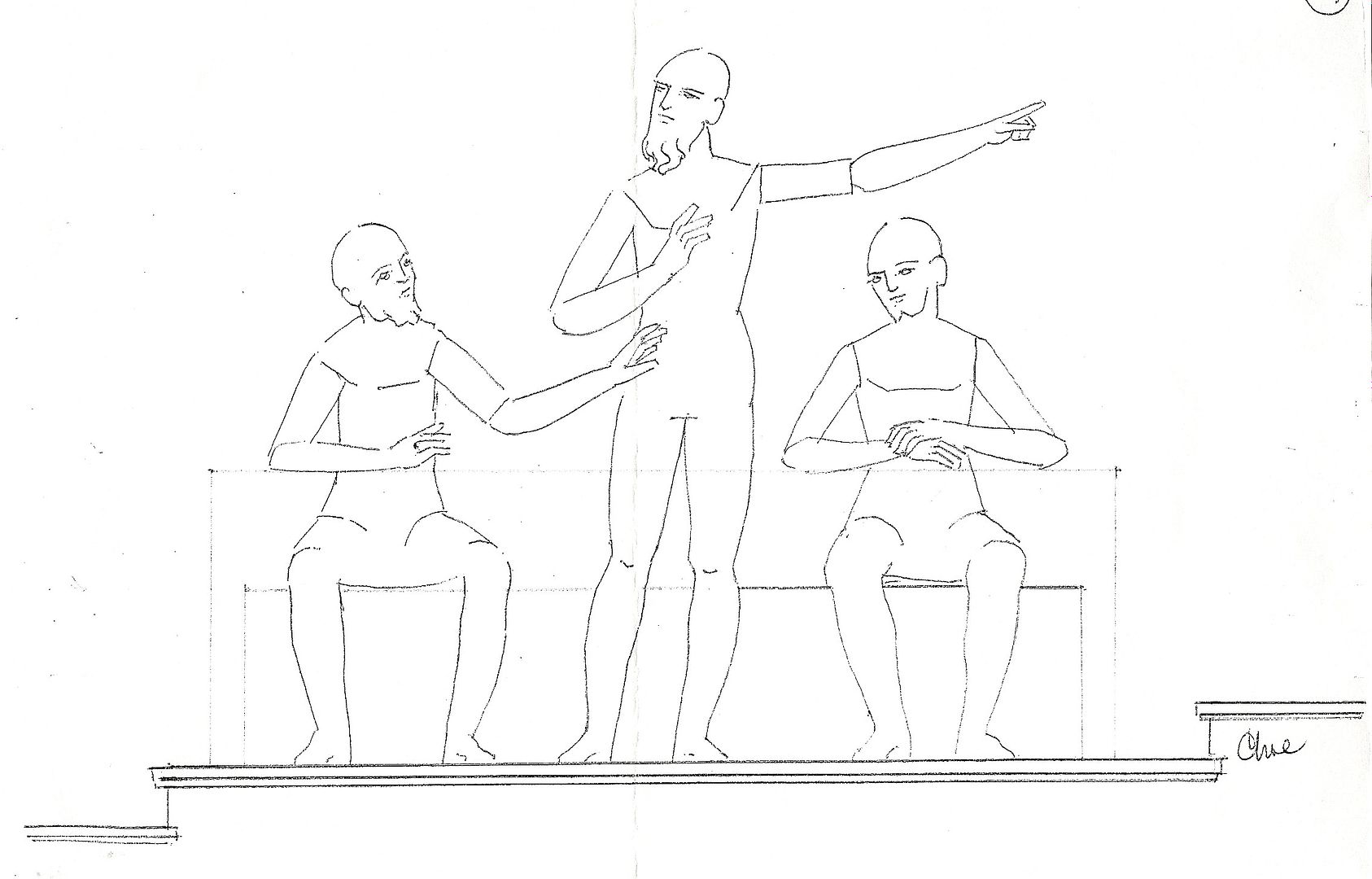


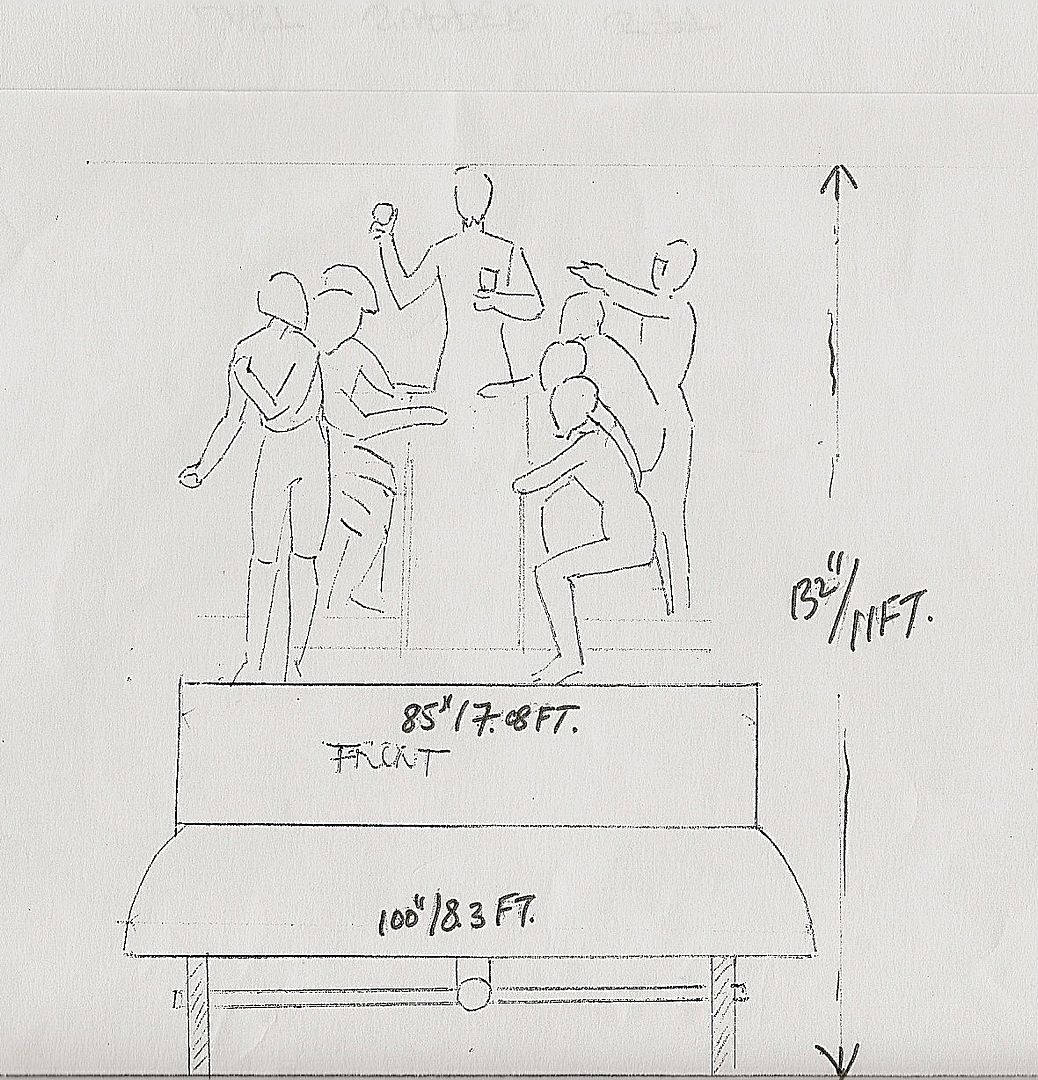
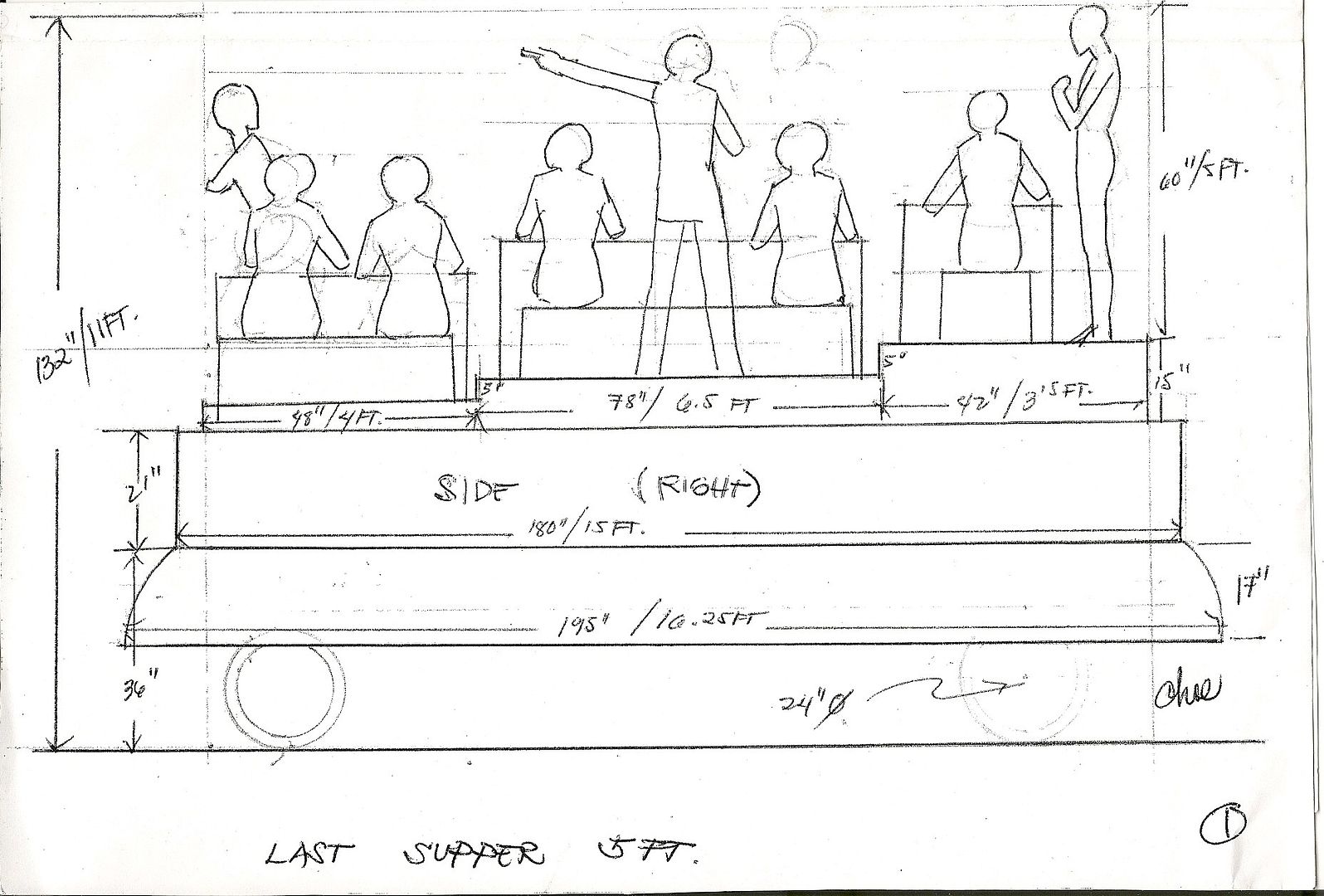

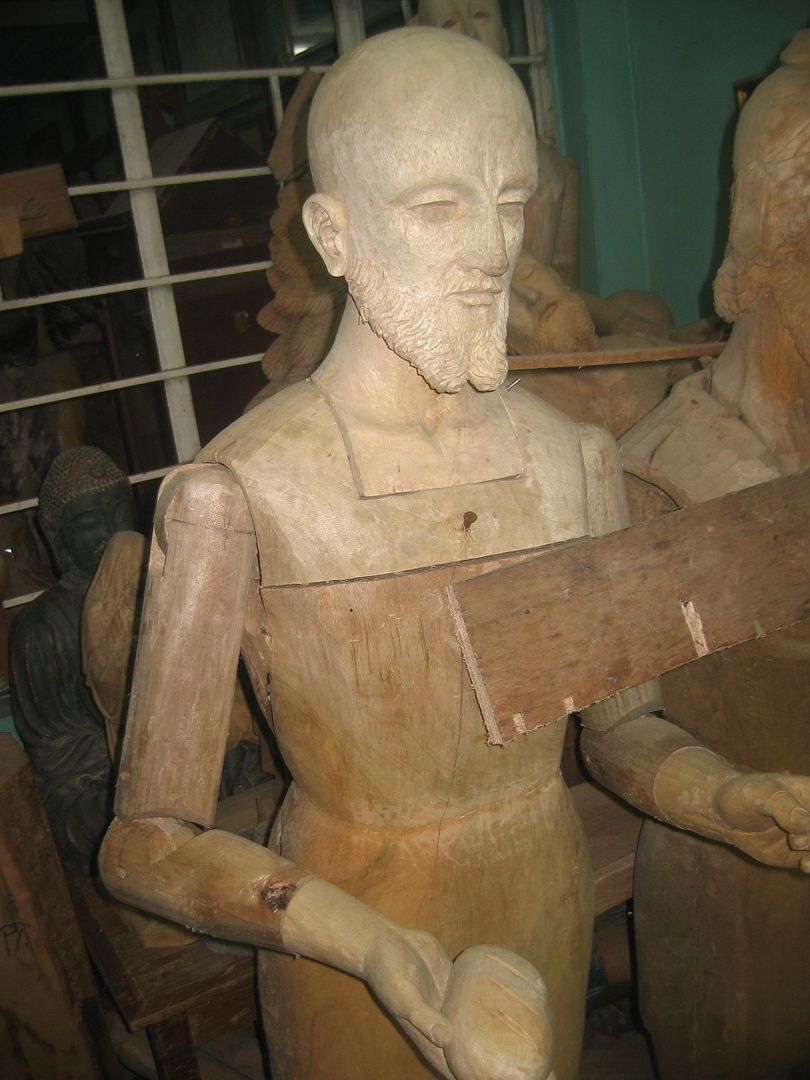

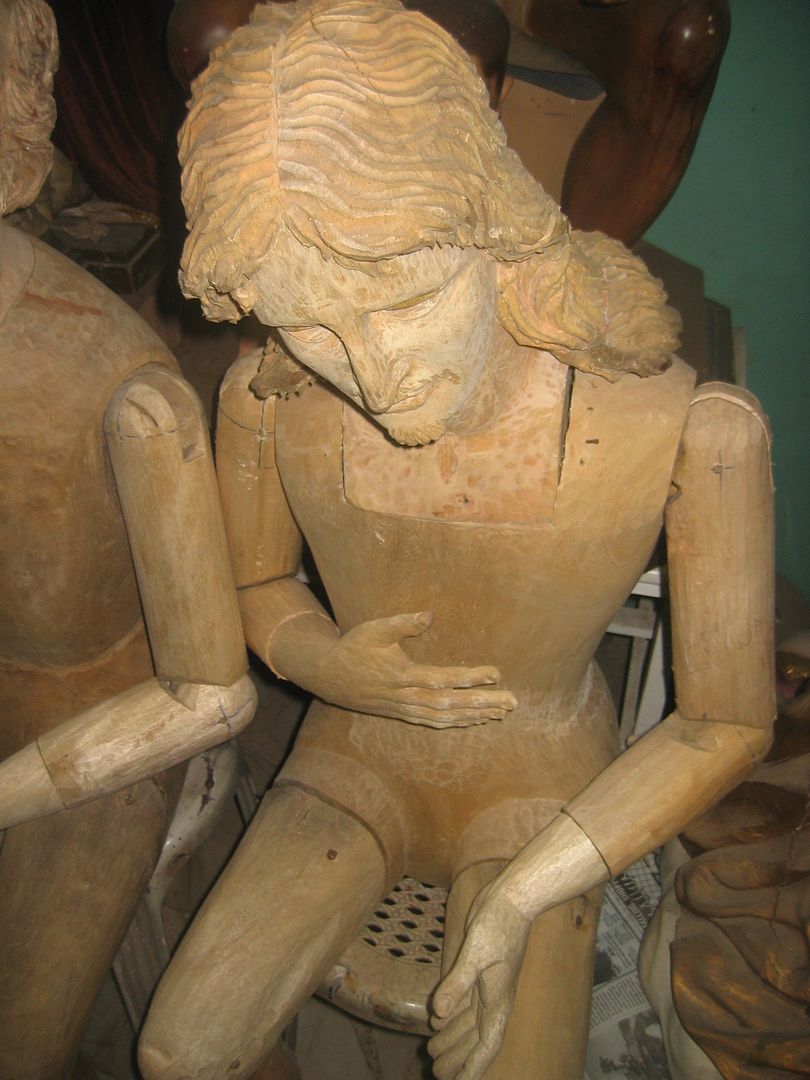
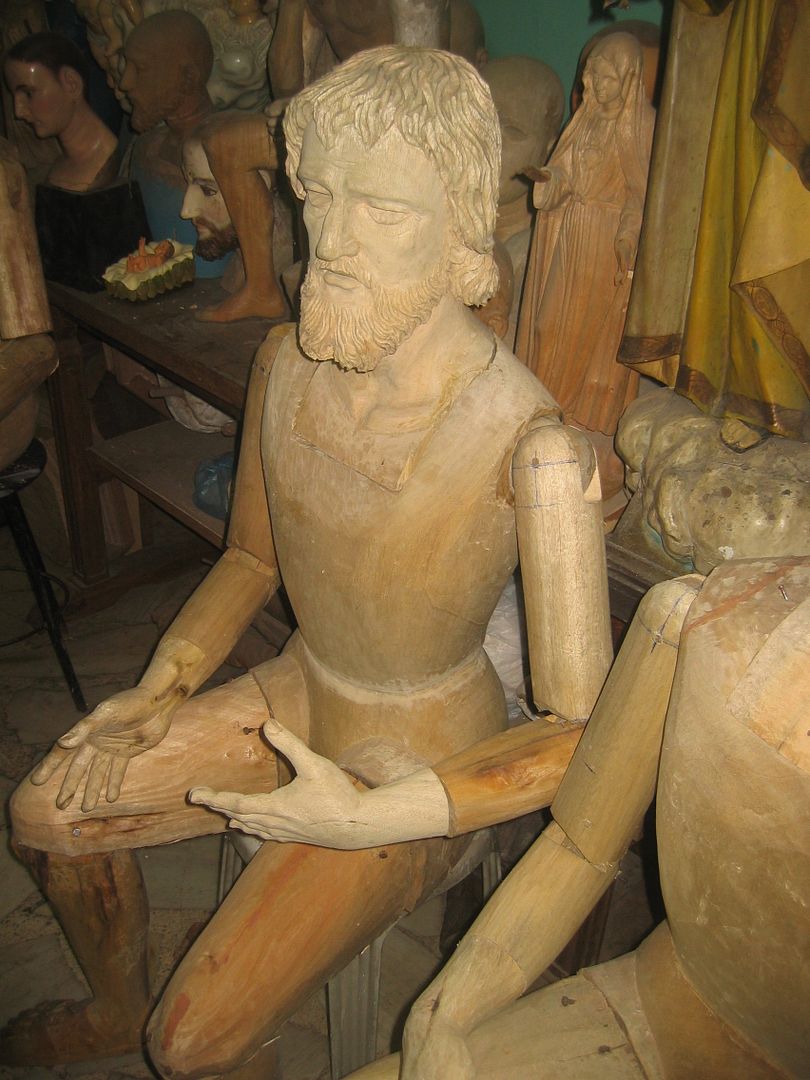
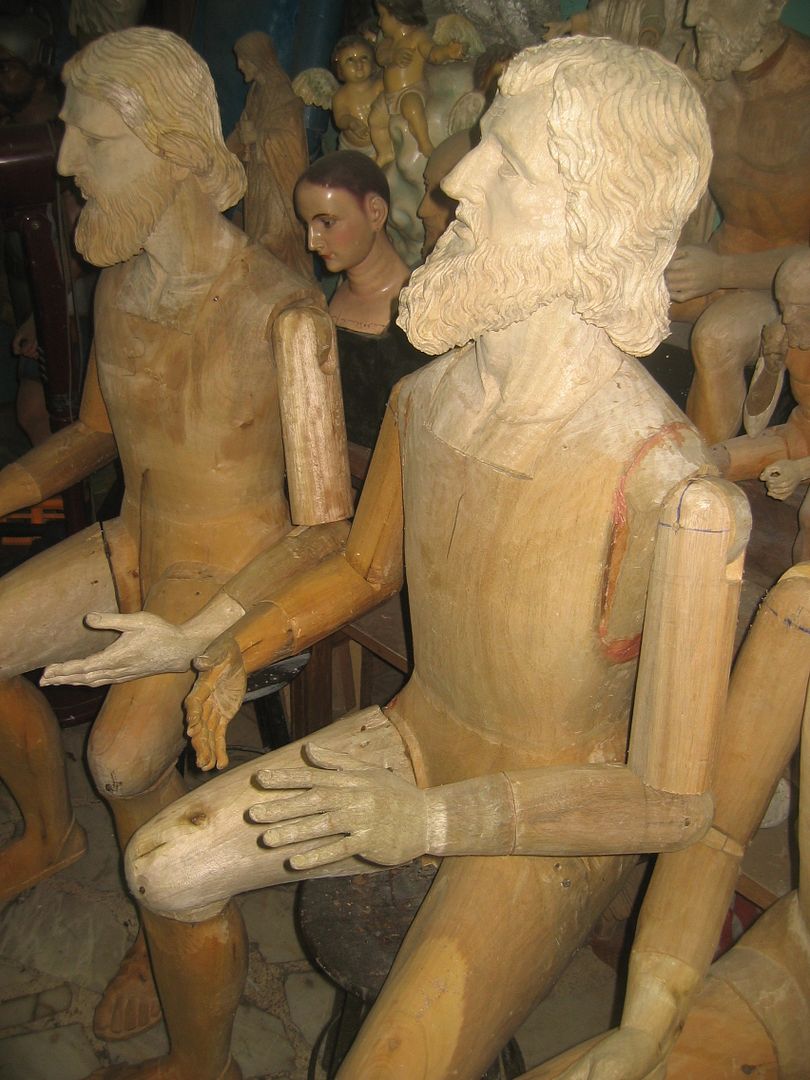
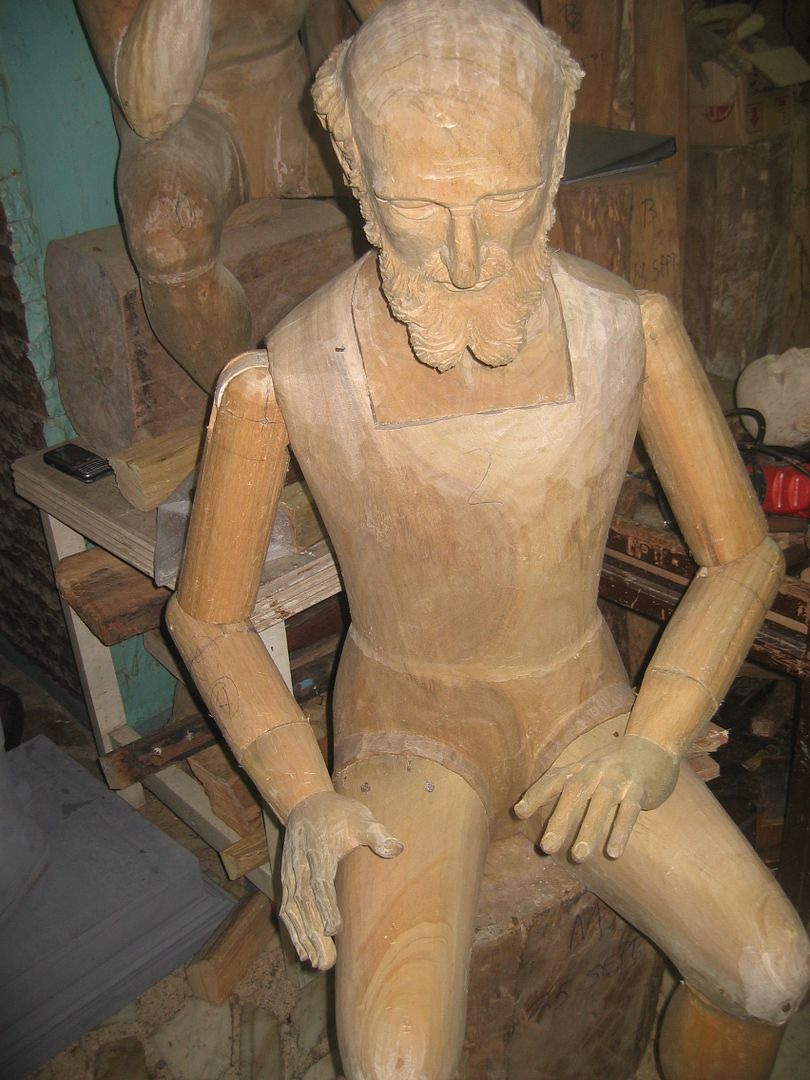
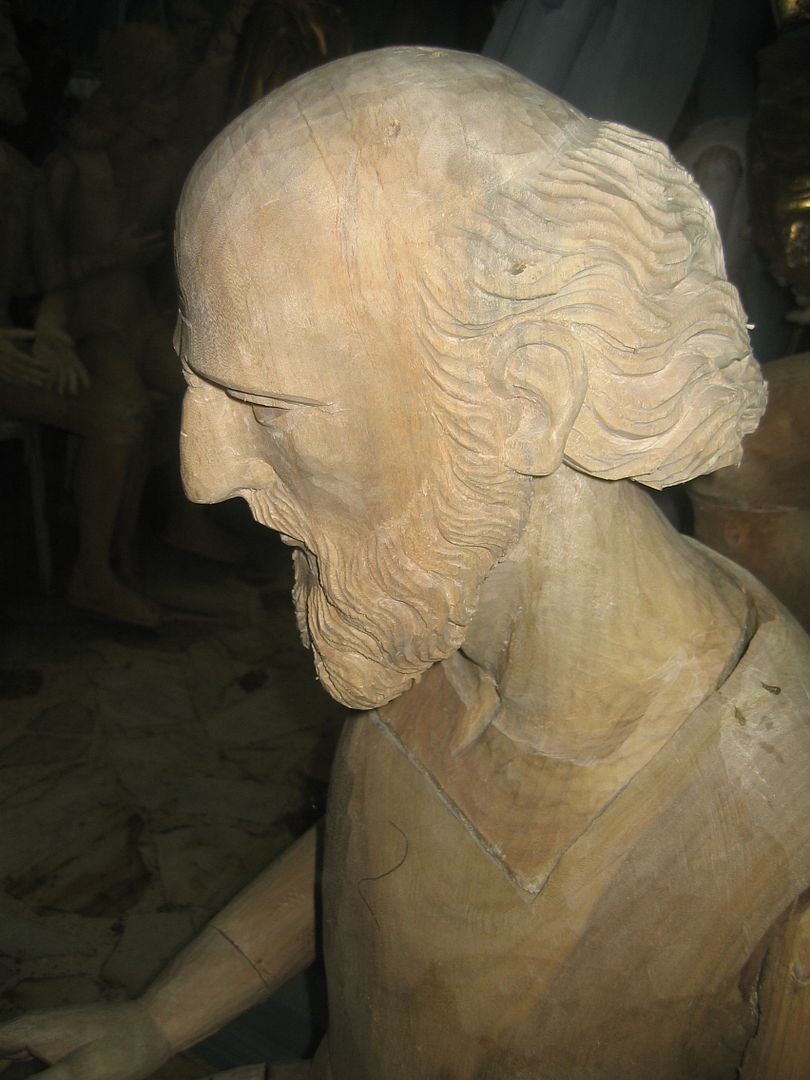
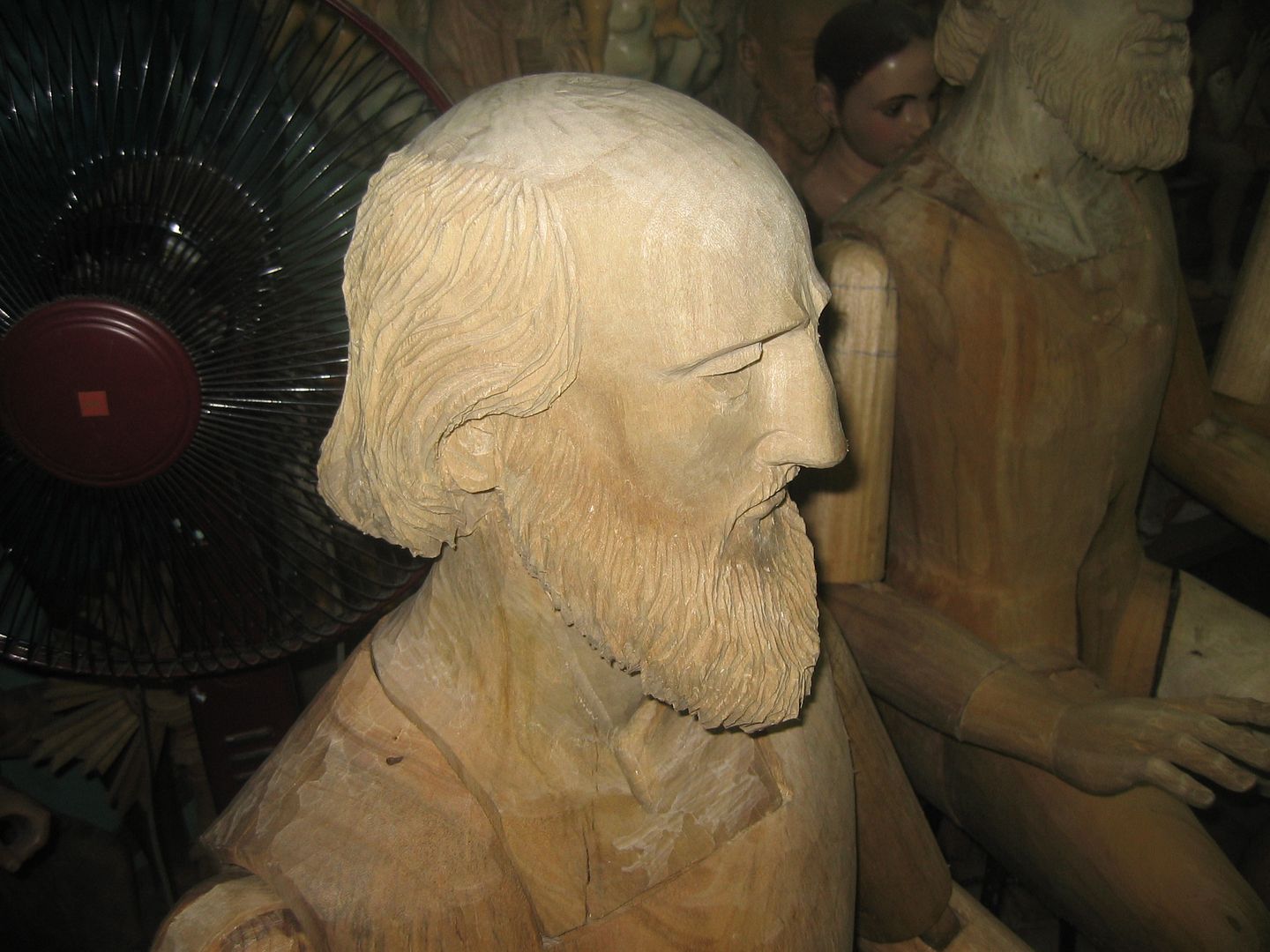
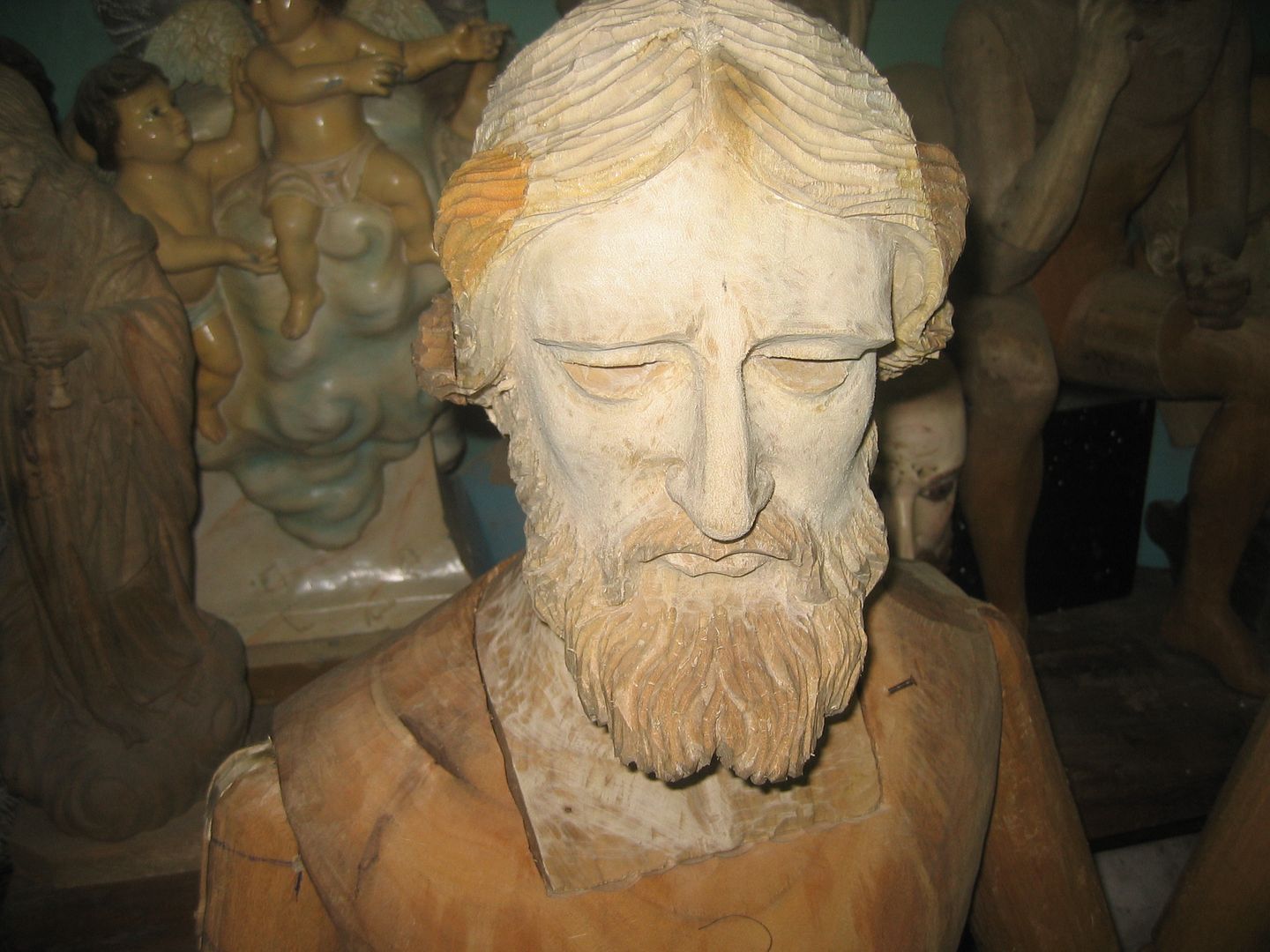
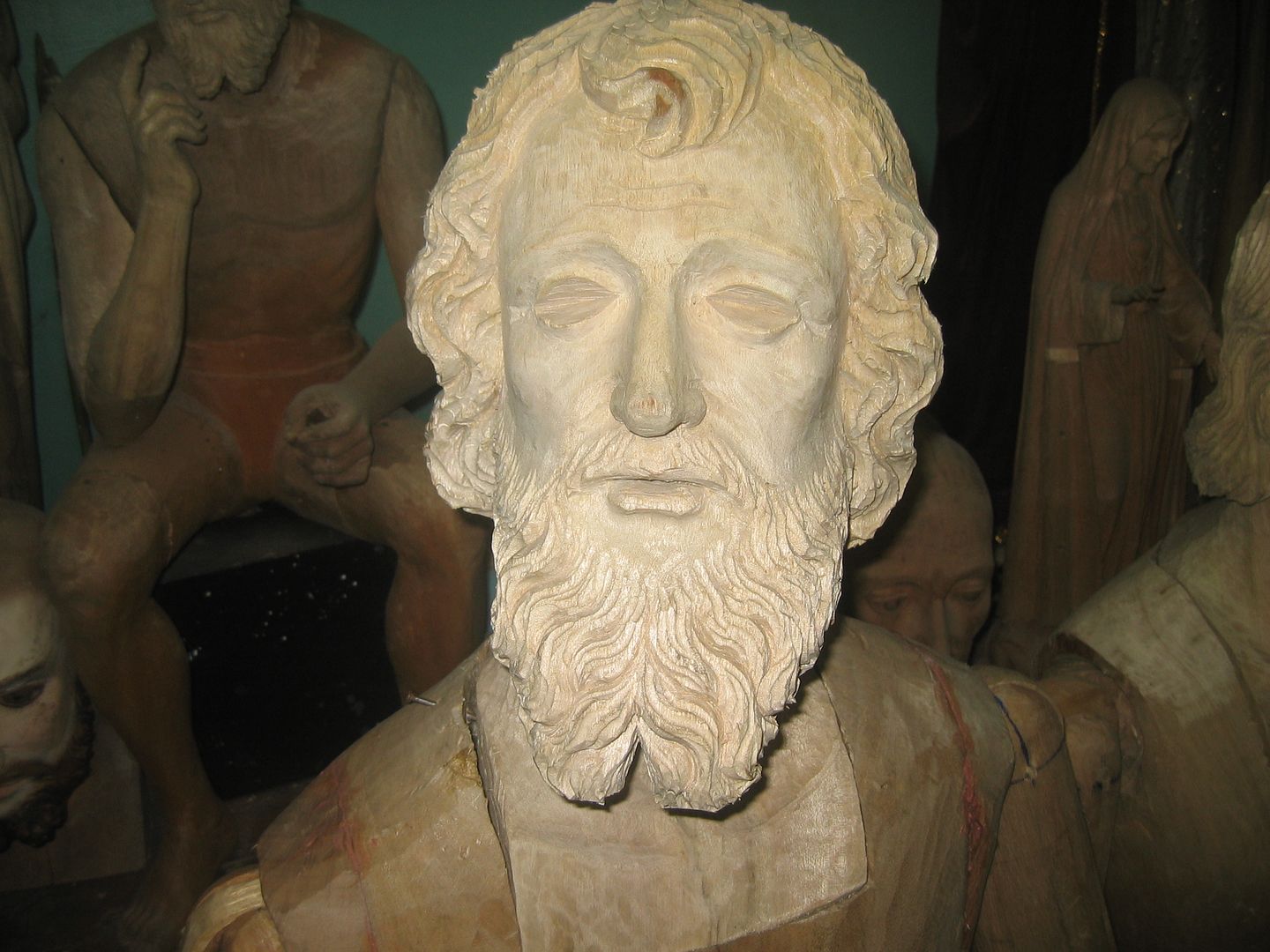

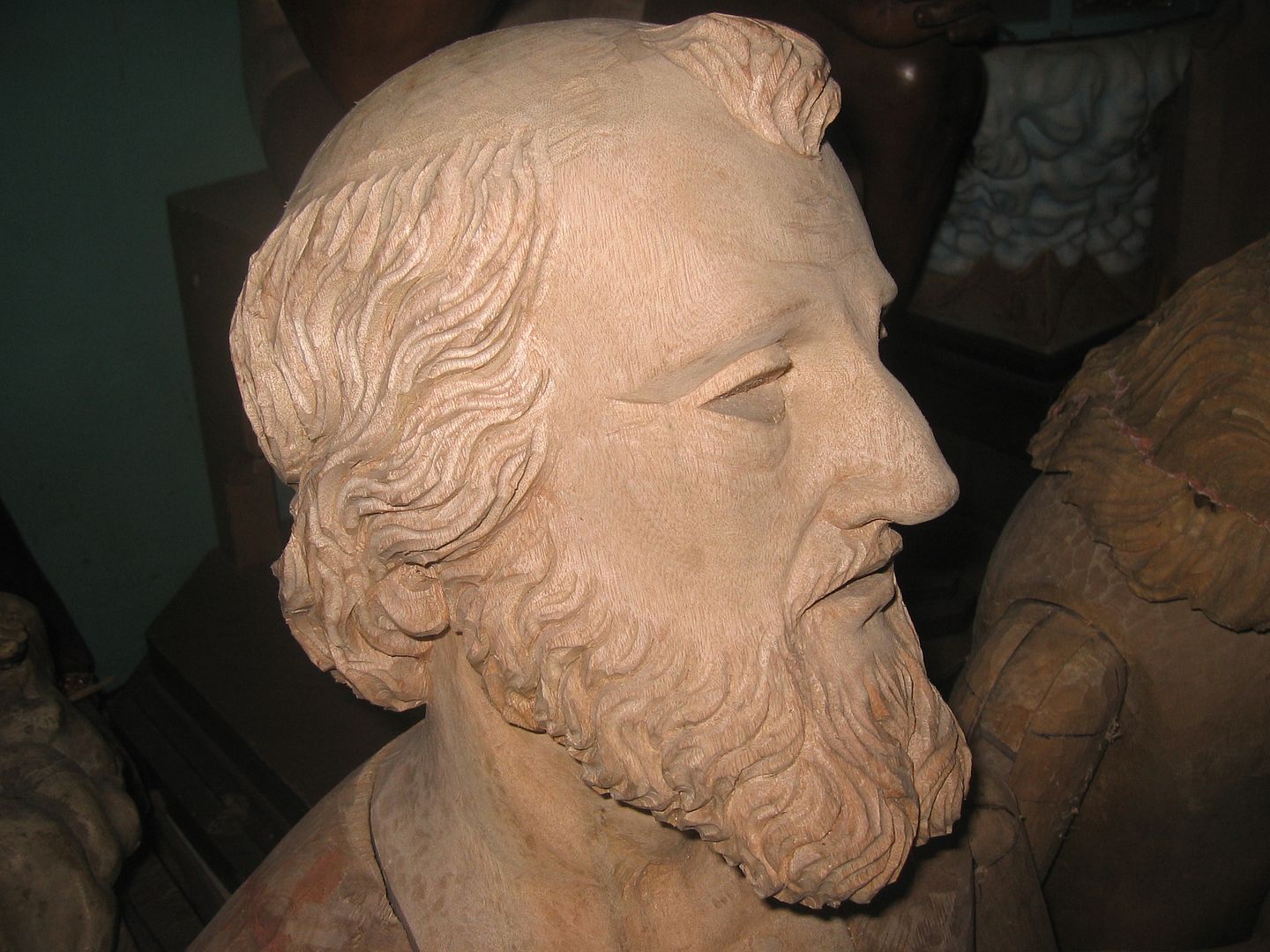


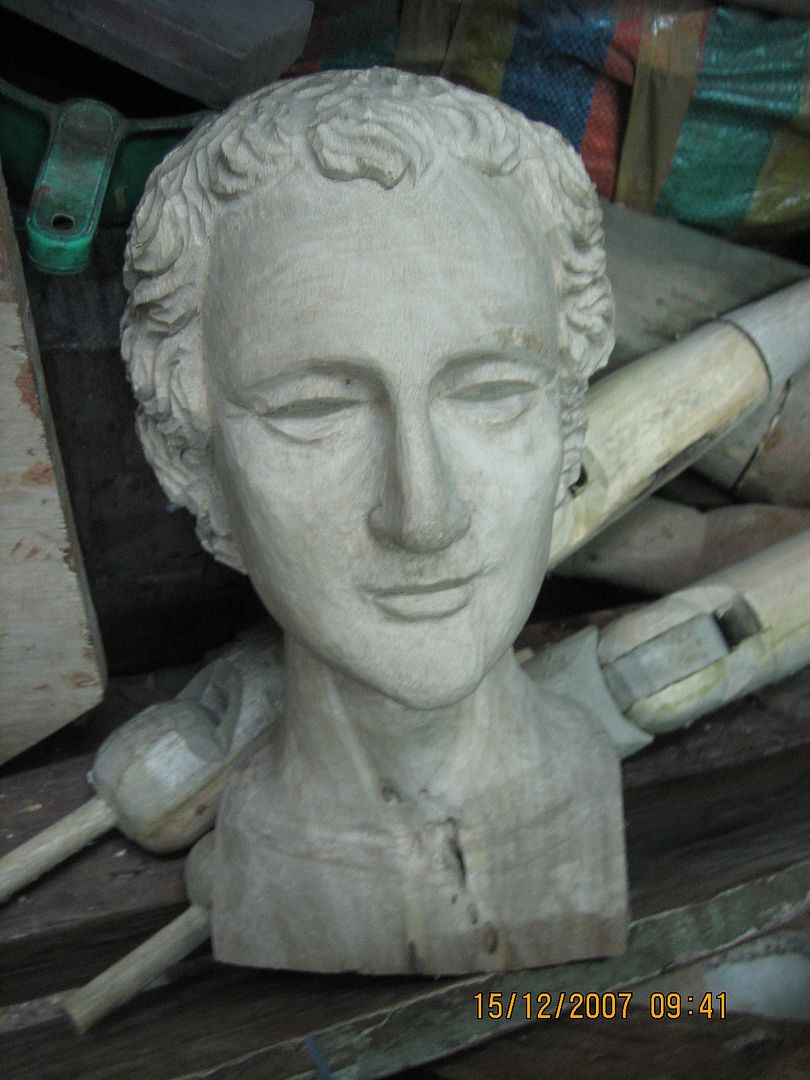





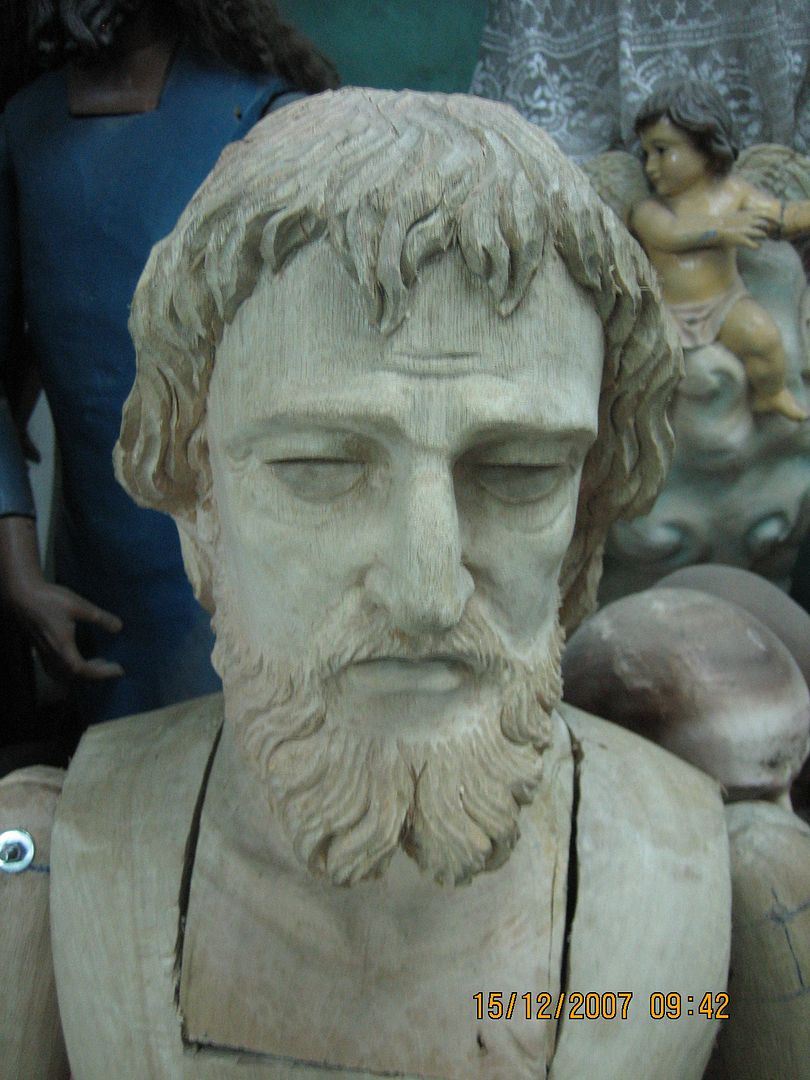

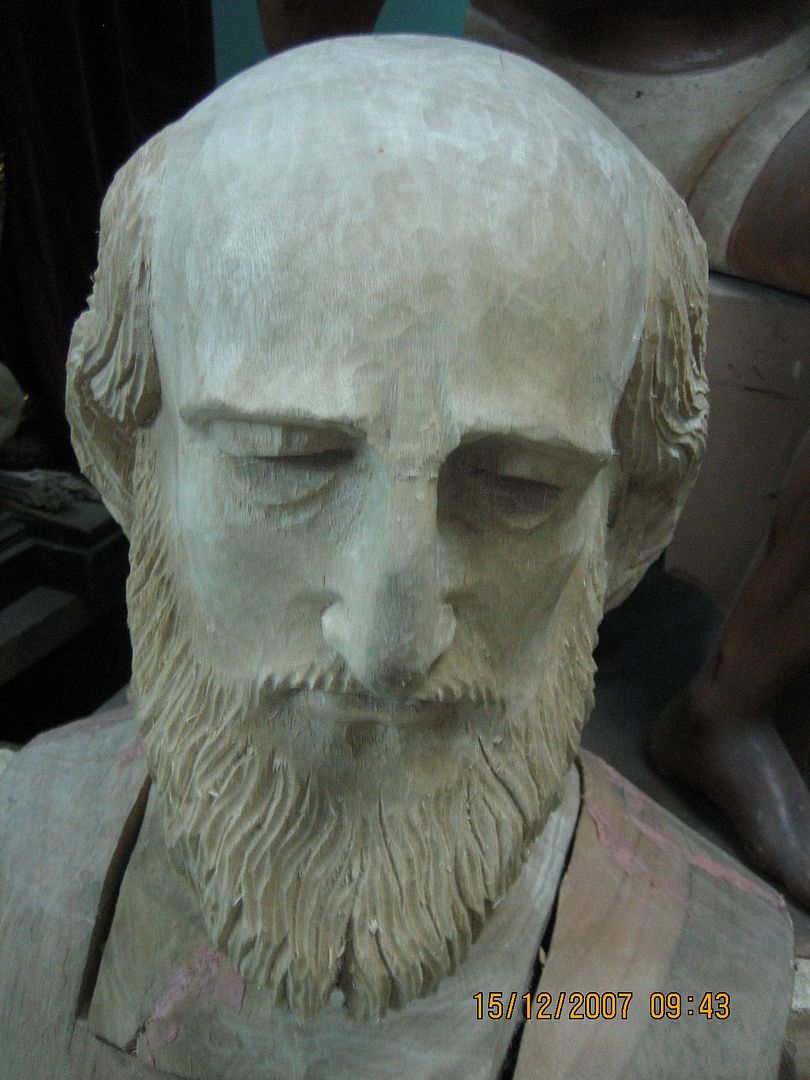
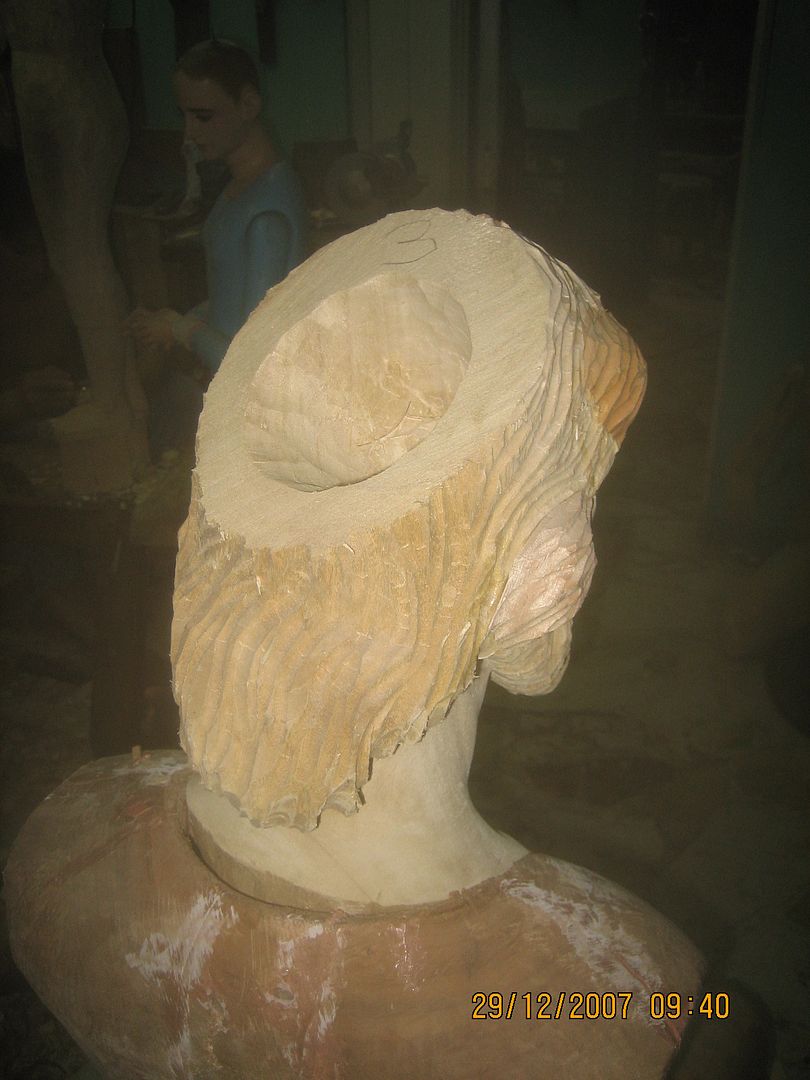



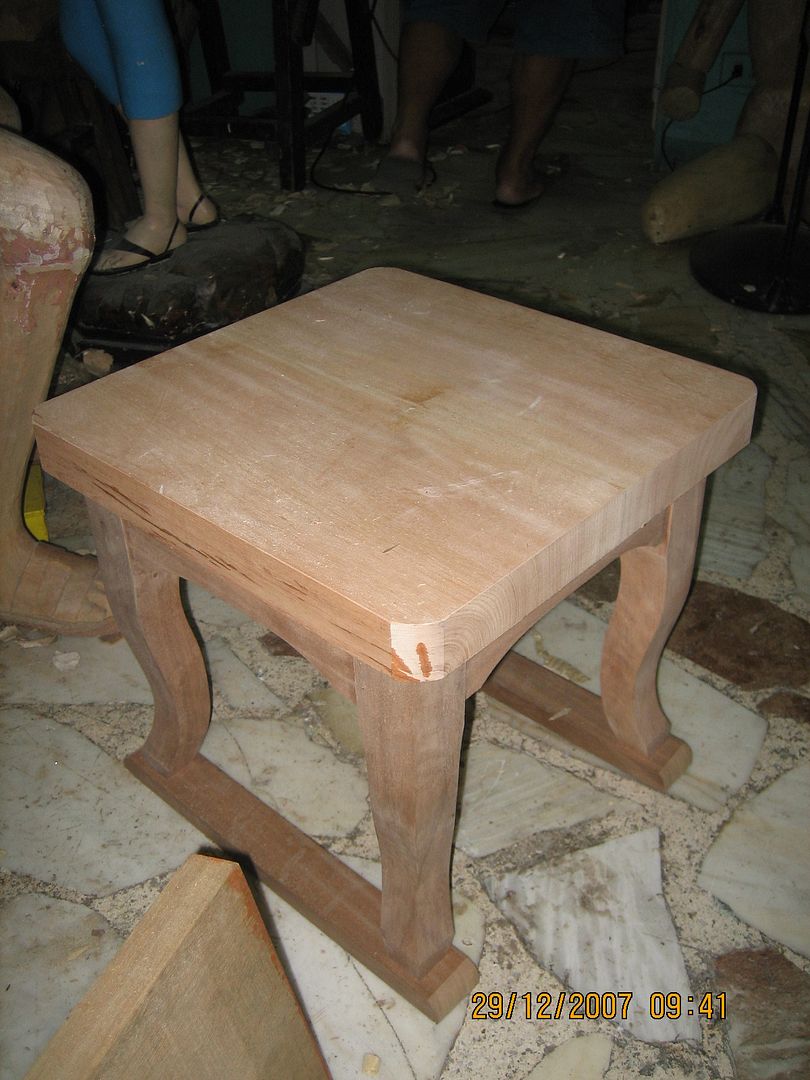



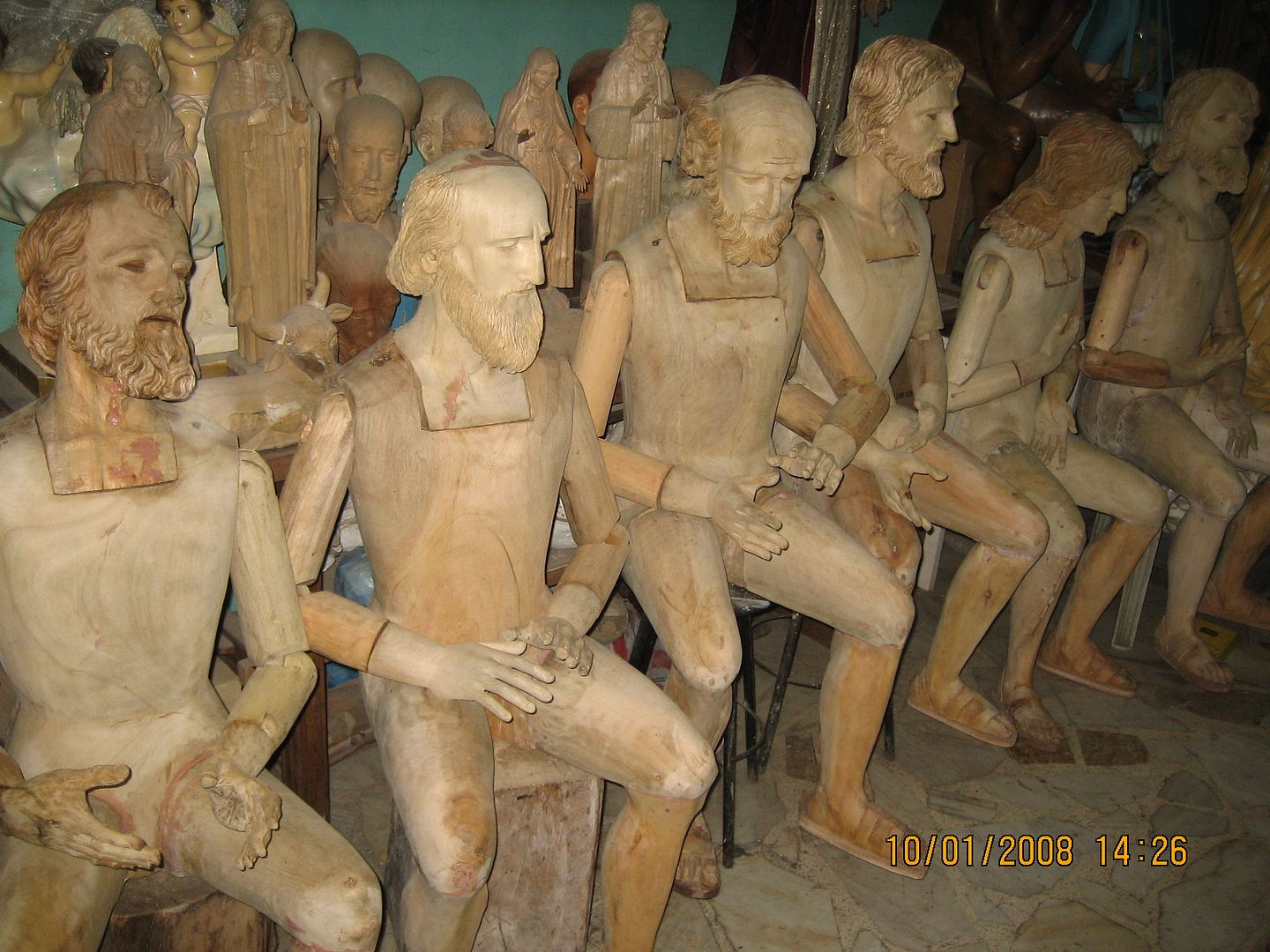









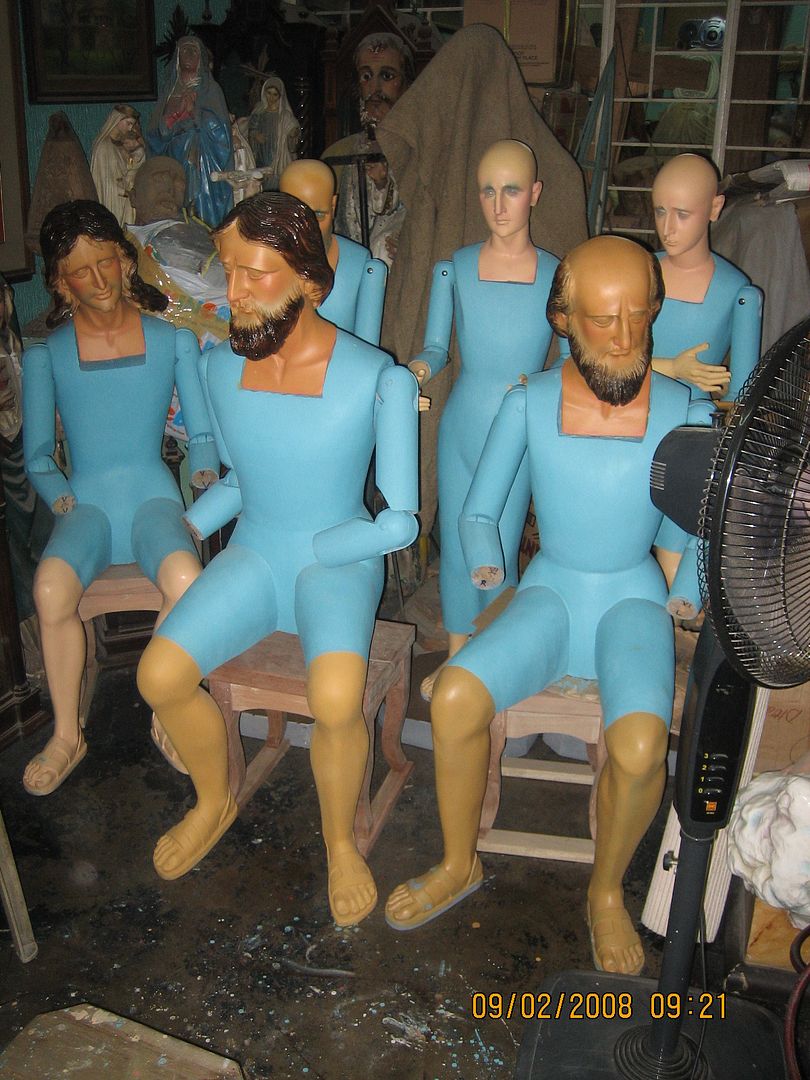



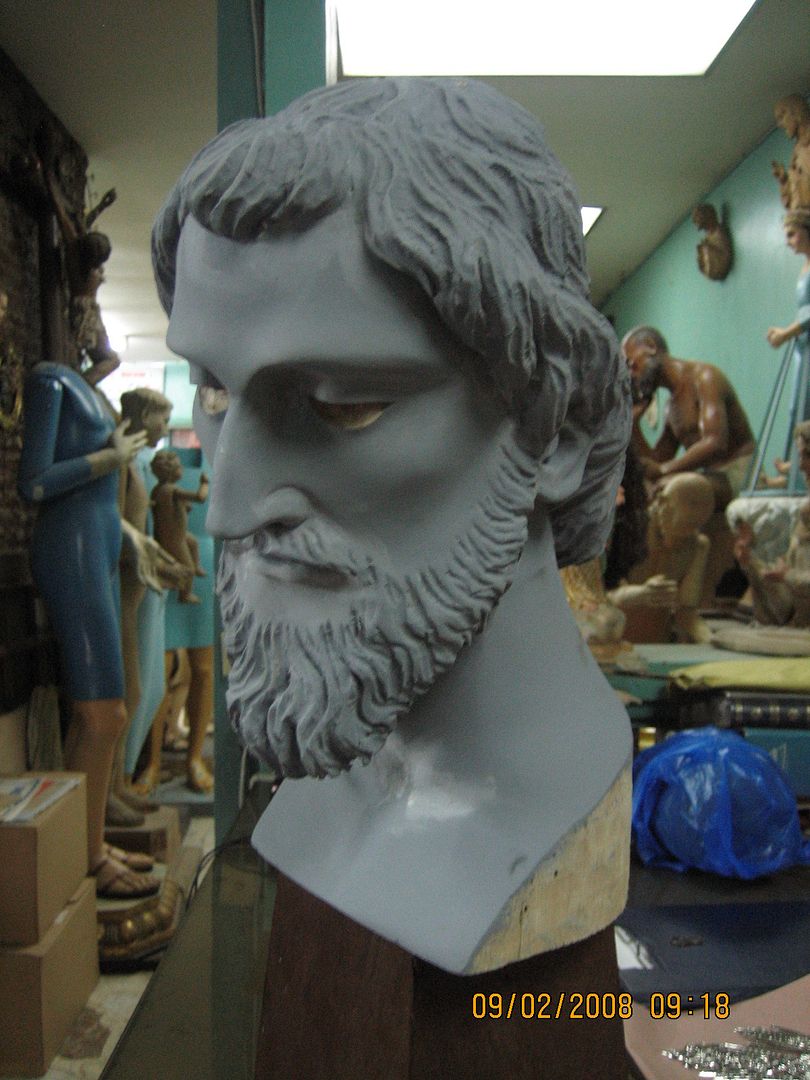

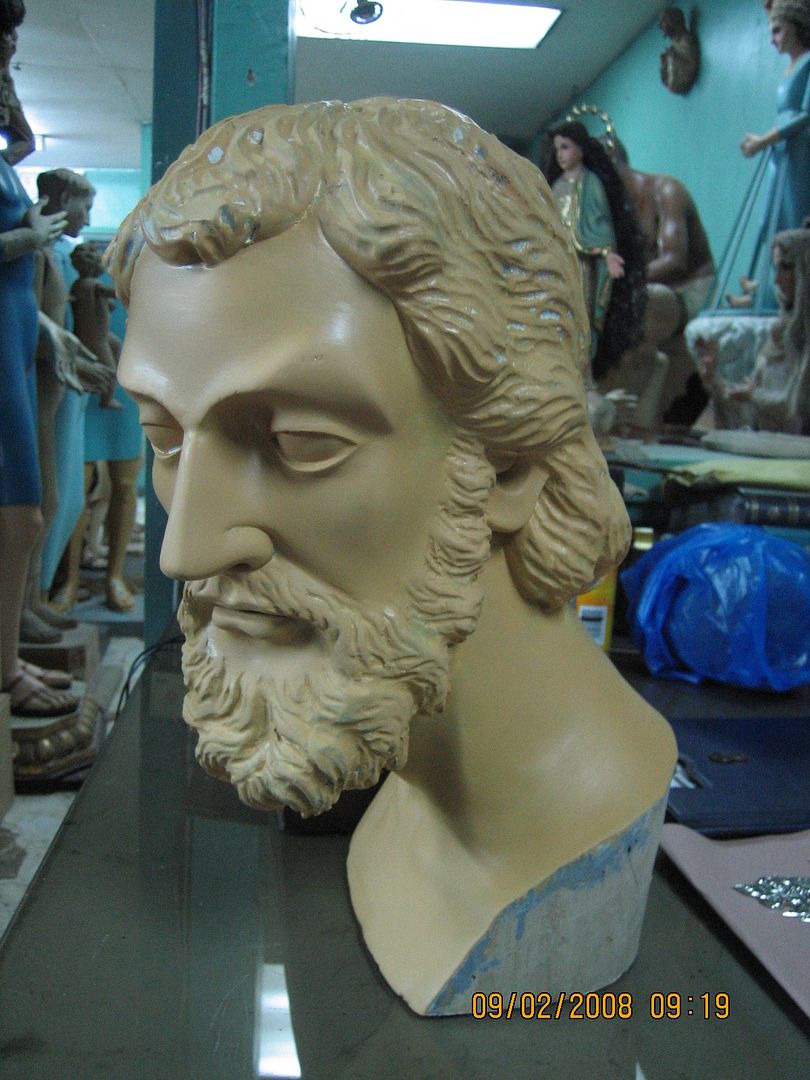

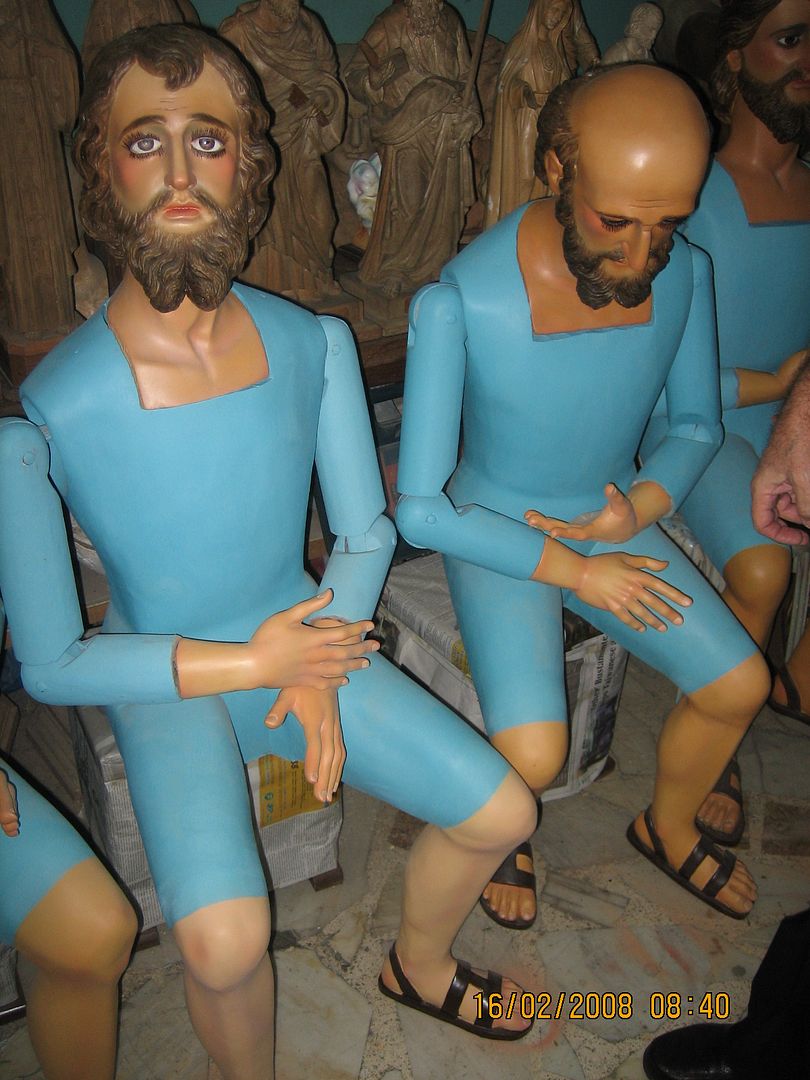

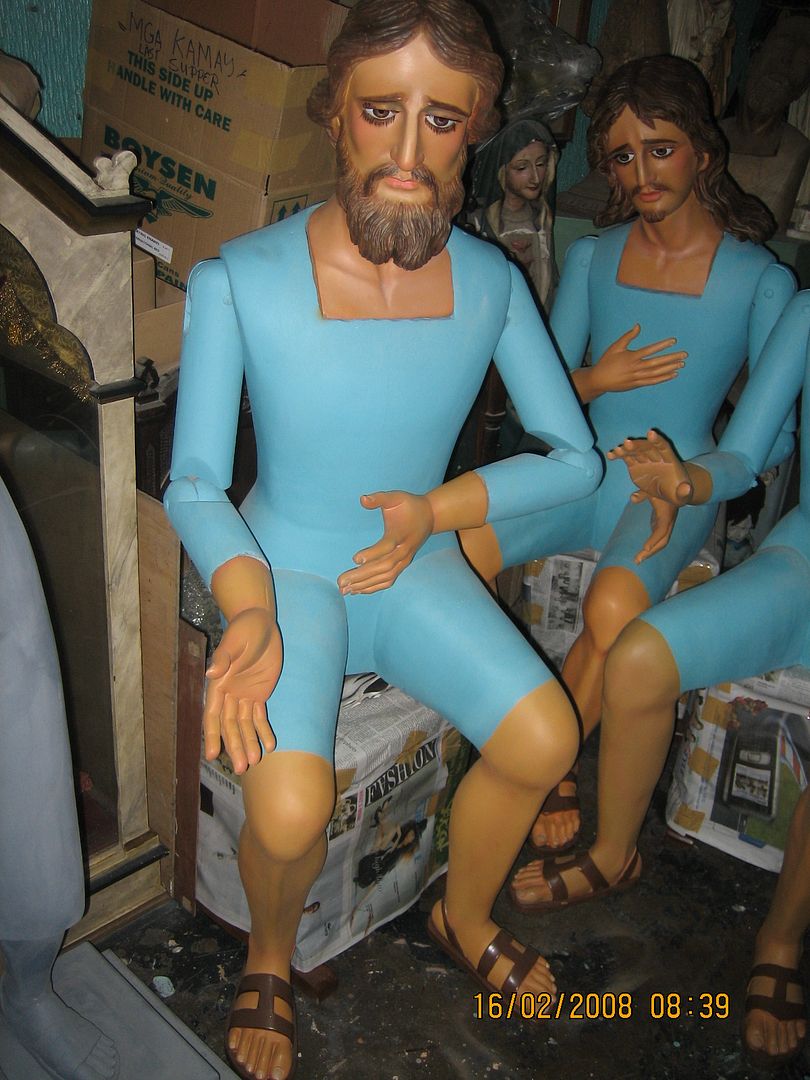





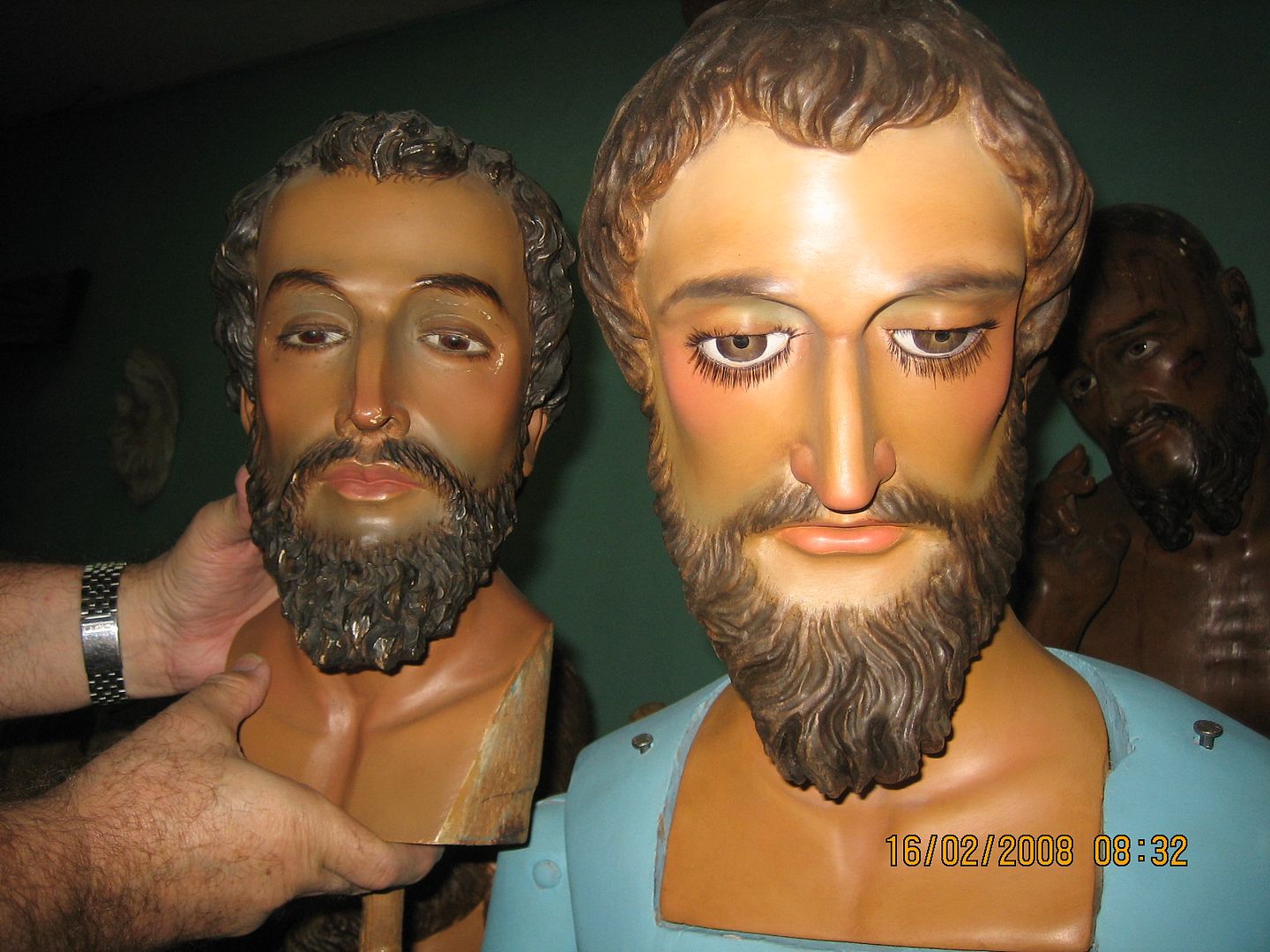
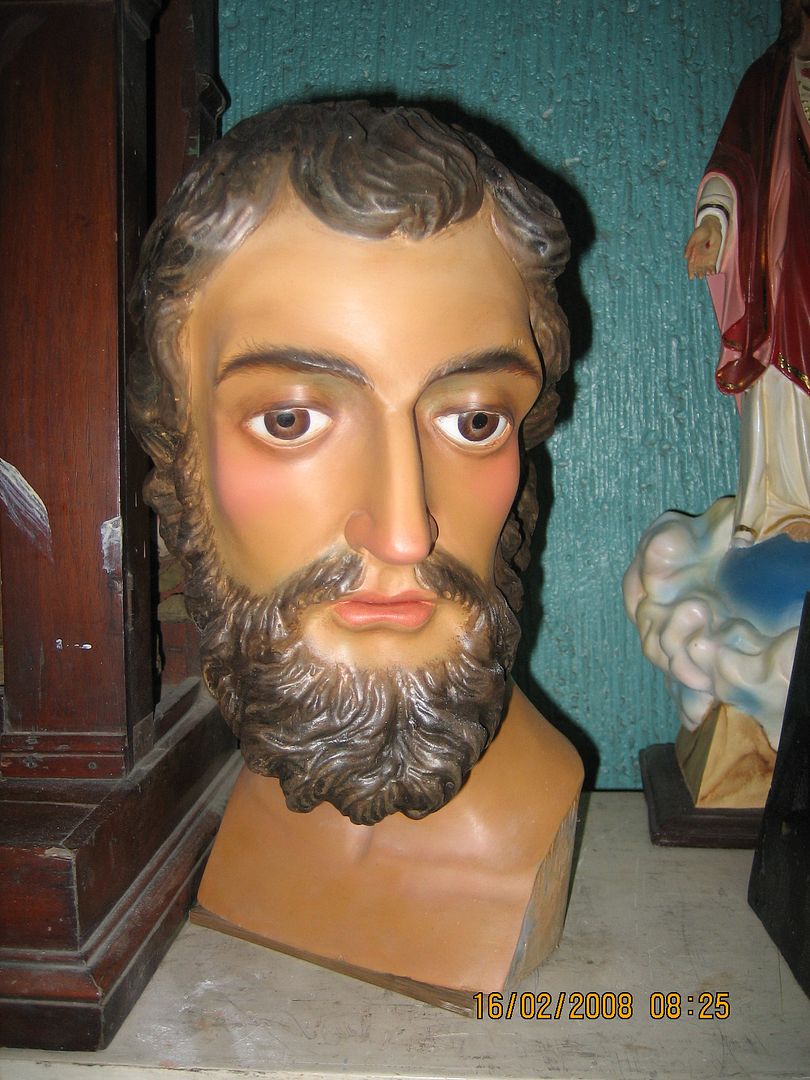

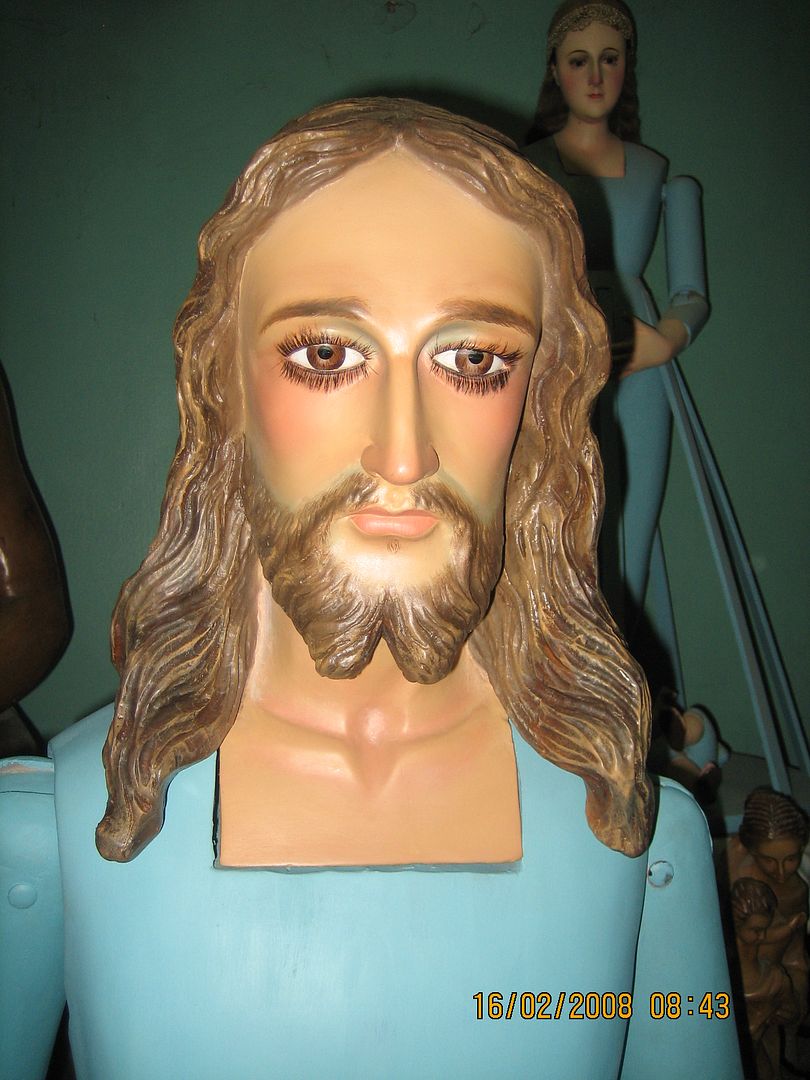


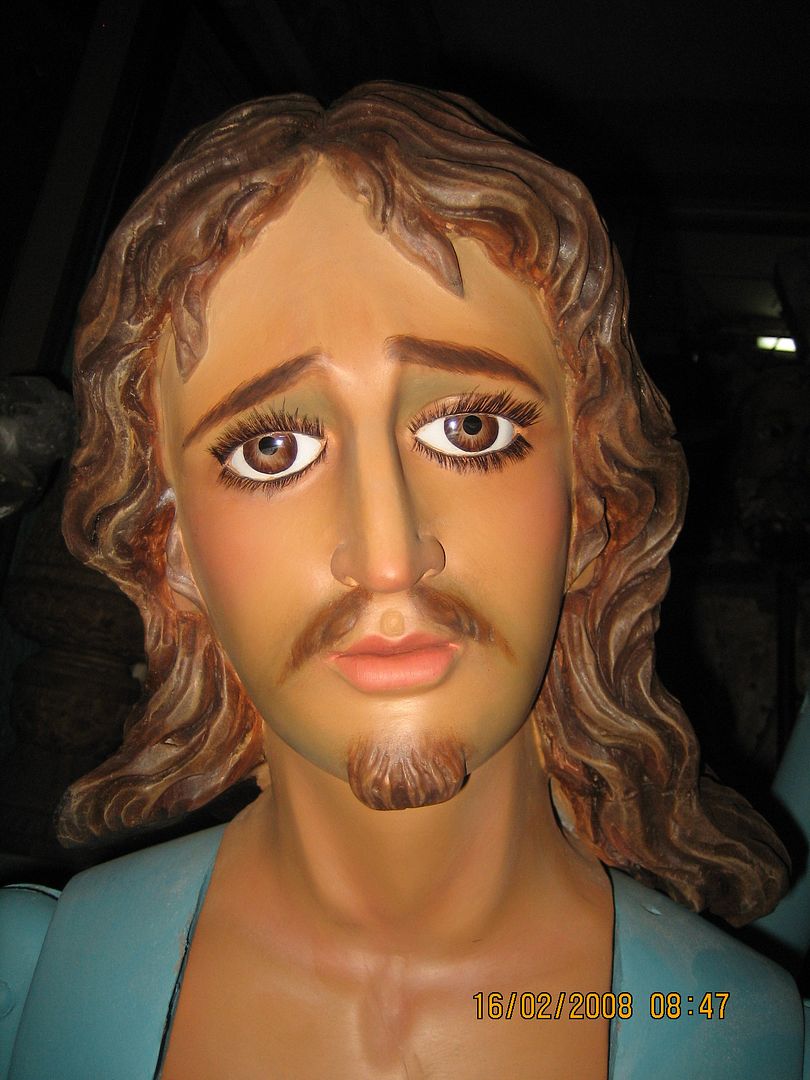



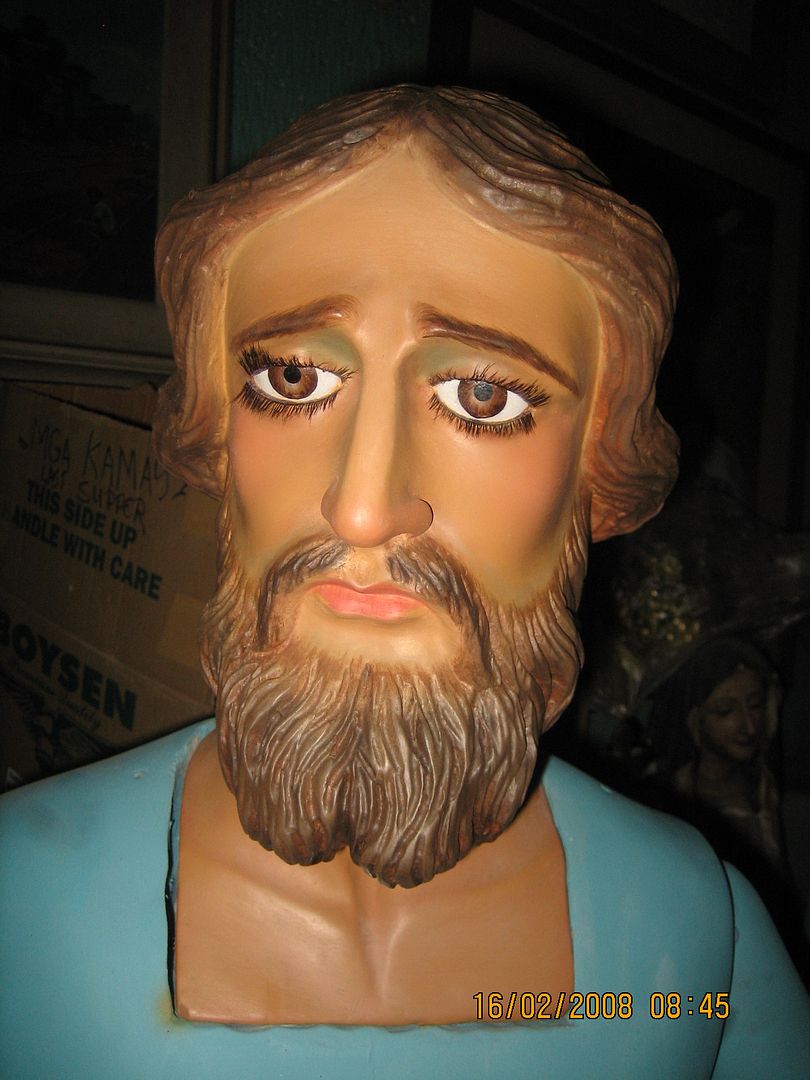

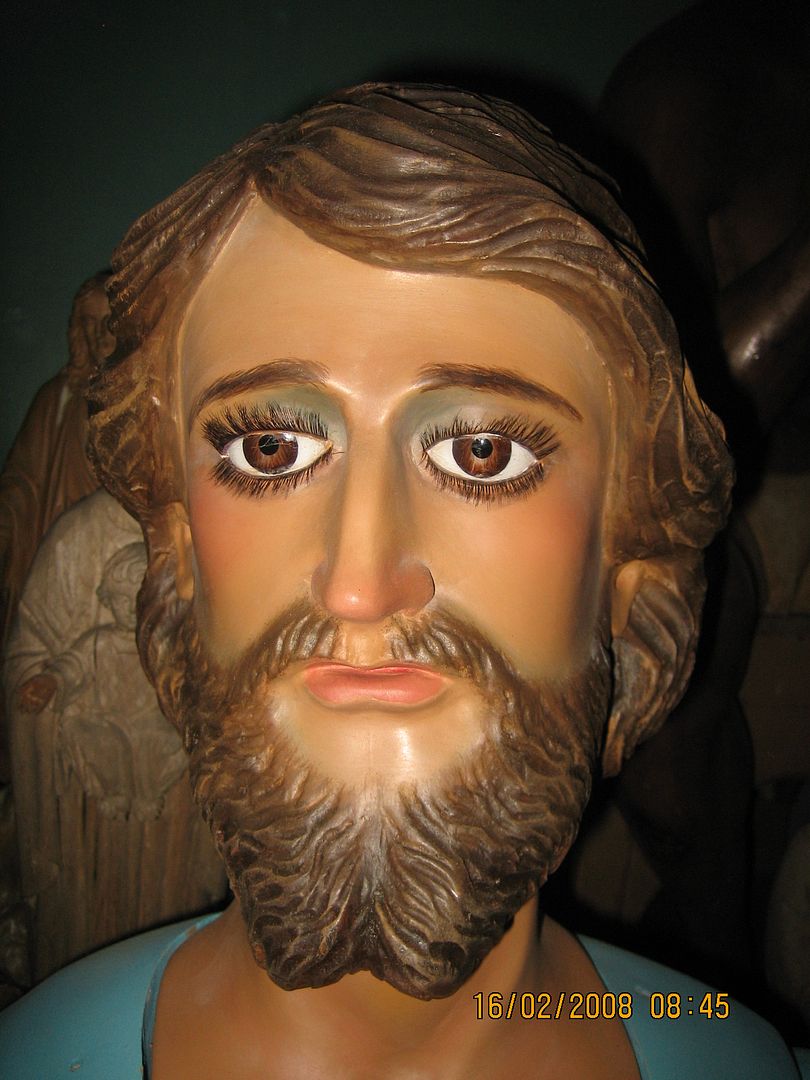




No comments:
Post a Comment